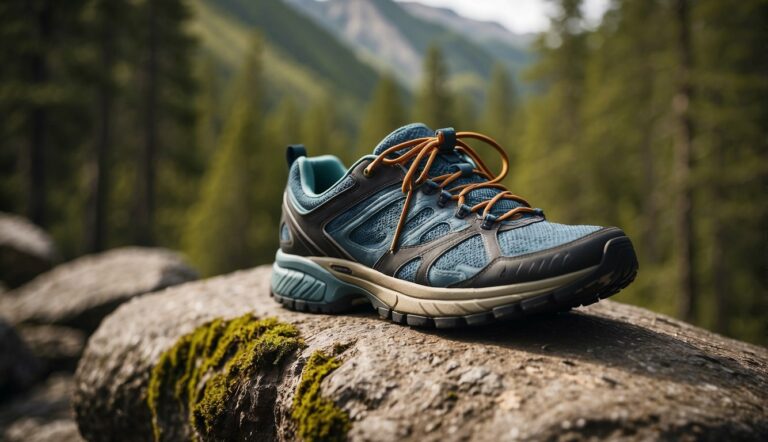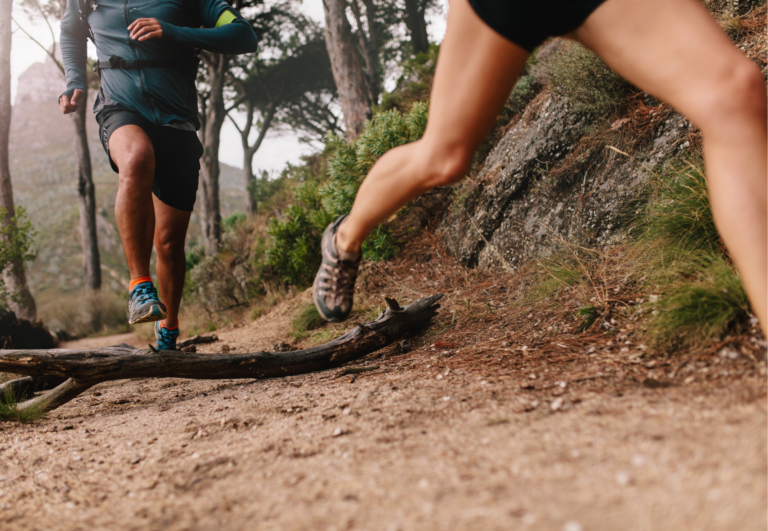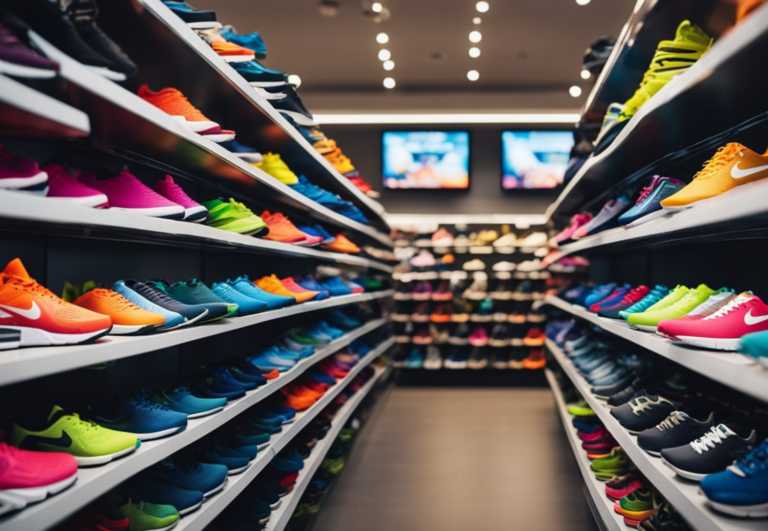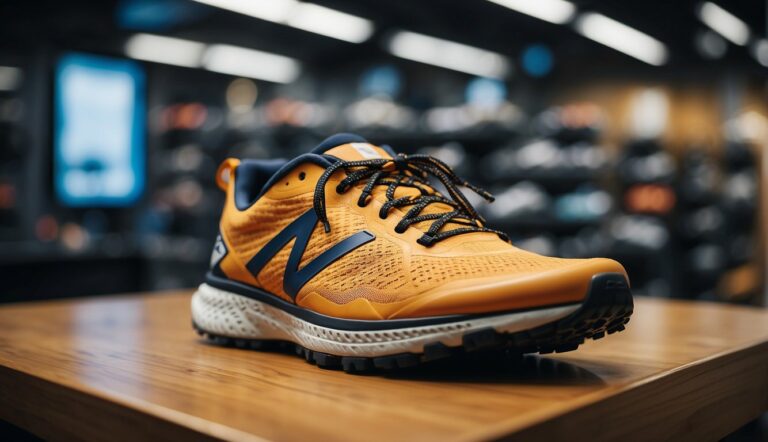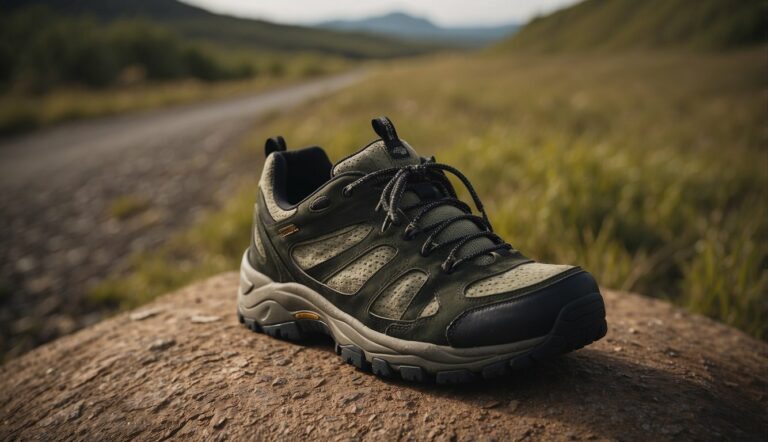Heel-to-Toe Drop in Running Shoes: Impact on Performance & How To Choose
Zero drop running shoes are designed to provide a natural running experience by keeping the heel and toe at the same height, simulating barefoot running. This innovative footwear encourages a midfoot strike and can lead to improved running form for many athletes.
In this comprehensive guide, we delve into the benefits of zero drop shoes and offer expert advice on transitioning to this minimalist running style safely.
Whether you’re a seasoned runner or new to the concept, our insights will help you understand if zero drop running shoes are the right choice for your running journey.
What Exactly Is Heel-to-Toe Drop in Running Shoes?

The heel-to-toe drop in running shoes is a key factor in the design that can influence your running experience. Heel-to-toe drop in running shoes is measured in millimeters and reflects the difference between the height at the heel and the forefoot.
Measuring Heel-to-Toe Drop
Measuring the heel-to-toe drop involves taking the height of the shoe’s heel (the heel stack) and subtracting the height of the shoe at the forefoot (the forefoot stack). This measurement is expressed in millimeters.
For instance, if the heel stack height is 30mm and the forefoot stack height is 20mm, the heel-to-toe drop (also known as offset or drop) would be 10mm. A higher heel-to-toe drop generally shifts more load to the forefoot, whereas a lower or zero drop aims to enable a more natural foot position and stride.
Running Shoe Categories by Heel-to-Toe Drop:
- Zero Drop: 0mm
- Low Drop: 1-4mm
- Medium Drop: 5-8mm
- High Drop: 9mm and up
How to Measure Heel-to-Toe Drop:
- Measure heel stack height in millimeters.
- Measure forefoot stack height in millimeters.
- Subtract forefoot height from heel height for the drop.
Example:
- Heel Stack: 30mm
- Forefoot Stack: 20mm
- Heel-to-Toe Drop: 10mm
The Impact of Toe Drop on Running Mechanics
The heel-to-toe drop in your running shoes can significantly shape your running mechanics, affecting everything from foot strike to overall posture.
Foot Strike Patterns
Foot Strike Patterns refer to the part of your foot that first contacts the ground during a running stride.
This can be broadly categorized into:
- Heel Strike: Your heel hits the ground first.
- Midfoot Strike: The center of your foot makes the initial contact.
- Forefoot Strike: You land on the ball of your foot.
| Foot Strike Type | Common in Drop Heights | Potential Impact on Mechanics |
|---|---|---|
| Heel Strike | High Drop (>8mm) | Greater impact on knees; encourages ankle dorsiflexion |
| Midfoot Strike | Medium Drop (4-8mm) | May promote a balance in leg muscle use |
| Forefoot Strike | Low Drop (0-4mm) | Increases calf muscle demand; mimics barefoot running |
It’s essential for you to understand that your natural gait might be influenced by the type of foot strike you adopt.
Gait and Posture
The drop of a running shoe, which is the height difference between the heel and toe, impacts your gait and posture by altering how your foot lands and distributes weight during a run.
- High Drop Shoes tend to encourage a heel strike pattern and can affect your posture by shifting your center of mass.
- Low Drop Shoes may facilitate a forefoot or midfoot strike, which could enable more ankle flexion and potentially a more natural gait similar to barefoot running.
| Drop Height (mm) | Likely Influence on Posture |
|---|---|
| High (>8mm) | May cause a more upright posture; rear foot may land first |
| Low (0-4mm) | Promotes forward lean; front of foot may land first |
Balancing your shoe’s drop with your running form is key to maintaining efficient and comfortable running mechanics.
Different Types of Drops and Their Features
Heel-to-toe drop in running shoes affects how your foot strikes the ground and can influence your running form. Here’s an overview of different types of drops, each offering unique features to suit various running styles.
Zero Drop and Natural Running
Zero-drop shoes are designed to mimic barefoot running, with no difference in height between the heel and forefoot. This type of shoe encourages a natural running gait, often leading to a midfoot or forefoot strike.
- Zero Drop Shoes:
- Features: Mimics barefoot running; encourages natural gait
- Good for: Runners looking for a natural feel; those transitioning to barefoot-style running
Low, Medium, and High Drop Shoes
Running shoes typically fall into three categories based on their heel-to-toe drop measurements: low, mid, and high drop.
- Low-Drop Shoes (1-4mm):
- Features: Close to ground; promote a more natural footstrike
- Good for: Runners who want a blend of natural foot motion and some cushioning
- Mid-Drop Shoes (5-8mm):
- Features: Balance between cushioning and natural running feel
- Good for: Versatile use for different runners and running styles
- High-Drop Shoes (9mm and above):
- Features: Maximum cushioning, prominent heel; may enhance heel strike
- Good for: Runners who naturally heel strike; those who require extra support
Minimalist vs. Cushioned Shoes
Running shoes can also be categorized based on their overall design philosophy: minimalist or cushioned, which can intersect with their heel-to-toe drop.
- Minimalist Shoes:
- Features: Minimal cushioning; lightweight, flexible
- Often: Low to zero-drop profiles
- Good for: Runners seeking a “close-to-ground” experience
- Cushioned Shoes:
- Features: Increased cushioning, often with higher drops
- Good for: Runners looking for impact absorption and comfort over longer distances
Choosing the Right Drop for Your Needs
Selecting the proper heel-to-toe drop in running shoes is crucial for your performance and comfort. It’s about matching your footwear to your individual needs, considering how and where you run.
Terrain and Usage Considerations
When you’re deciding on the right drop for your running shoes, consider the terrain. If you’re a road runner, you might prefer a higher drop, as it can offer additional cushioning and support through your stride.
Here’s a simple guide:
- Road Running: Higher drop (8mm or more)
- Trail Running: Lower to moderate drop (0-6mm for agility and stability)
Personal Preference and Comfort
Your choice should align with what feels natural and comfortable. Some runners may feel more comfortable with a higher drop that supports heel striking, while others may prefer the natural feel of a low drop that encourages a mid-to-forefoot strike. Listen to your body:
- Comfort Level with Higher Drop: Potentially better for heel strikers
- Comfort Level with Lower Drop: May suit those who land on the midfoot or forefoot
Transitioning Between Different Drops
If you’re planning to transition to a different drop height, it’s important to do so gradually. Sudden changes can lead to discomfort or injury. Start by integrating the new shoes into your routine slowly, increasing the distance run in them over time:
- Initial Phase: Use new drop height for shorter runs
- Progression: Gradually increase the distance as your body adapts
Health and Injury Considerations

When you think about the health of your lower leg, specifically your Achilles tendons, calf muscles, and knees, the heel-to-toe drop of your running shoes can influence these areas.
Visiting a podiatrist, especially one who specializes in sports medicine or has experience with runners, can provide personalized advice based on an individual’s foot structure, gait, and running style.
You could also consult with a running coach or trainer who has knowledge of different shoe types, including zero-drop models. They can offer advice based on training needs and running mechanics.
Link Between Heel Drop and Injury Risk
Injury Risks:
- Low Heel Drop (0-6mm): You’re more likely to land on your forefoot or midfoot, which can increase the strain on your Achilles tendon and calf muscles while potentially decreasing knee problems.
- High Heel Drop (8+mm): This common range can lead to a heel strike pattern, potentially putting less strain on the Achilles tendon, but may increase the risk of knee issues.
It’s important to note that injury rates don’t necessarily correlate directly to the drop of a shoe. Studies suggest that your body’s adaptation to a specific heel drop is as significant as the drop itself.
There is no one-size-fits-all, and each runner may respond differently to different shoe drops.
Adaptations for Runners with Specific Conditions
If you’re dealing with specific conditions such as Achilles tendonitis or plantar fasciitis, you might need to pay special attention to heel drop:
- Achilles Tendonitis: A lower drop may aggravate this condition as it can place added stress on the tendon.
- Plantar Fasciitis: A higher drop might be beneficial by providing more heel cushioning and reducing strain on the plantar fascia.
In case of knee pain, a lower drop could potentially relieve some discomfort by promoting a landing pattern that reduces impact on the knee. Runners with hip issues might also adjust the heel drop for better alignment and reduced stress on the hips.
Always listen to your body’s response when trying different heel drops, especially if you’re prone to ankle, calf, knee, or hip injuries. If unsure, consult with a medical professional or a specialist in running biomechanics to find the appropriate footwear that aligns with your unique needs.
How is Drop Related to Stack Height?
Drop is related to stack height in running shoes, but they are distinct measurements.
Here’s how they are related:
- Stack Height: This is the amount of material between your foot and the ground, measured in millimeters, and includes the midsole and outsole of the shoe. Stack height can be different in the heel and forefoot areas.
- Drop: This refers to the difference in stack height between the heel and the forefoot. It is calculated by subtracting the forefoot stack height from the heel stack height. For example, if a shoe has a heel stack height of 24mm and a forefoot stack height of 12mm, the drop is 12mm.
The drop can influence running mechanics and how the foot strikes the ground. A higher drop typically encourages a heel-first running pattern, while a lower drop (or zero drop) can promote a midfoot or forefoot strike.
Understanding both stack height and drop is important for runners when selecting a shoe, as it can affect comfort, running style, and the risk of injury.
- Stack Height Comparison:
- Low (<20mm): Greater ground feel, more suitable for experienced runners
- High (>30mm): More cushion, often found in maximalist shoes

